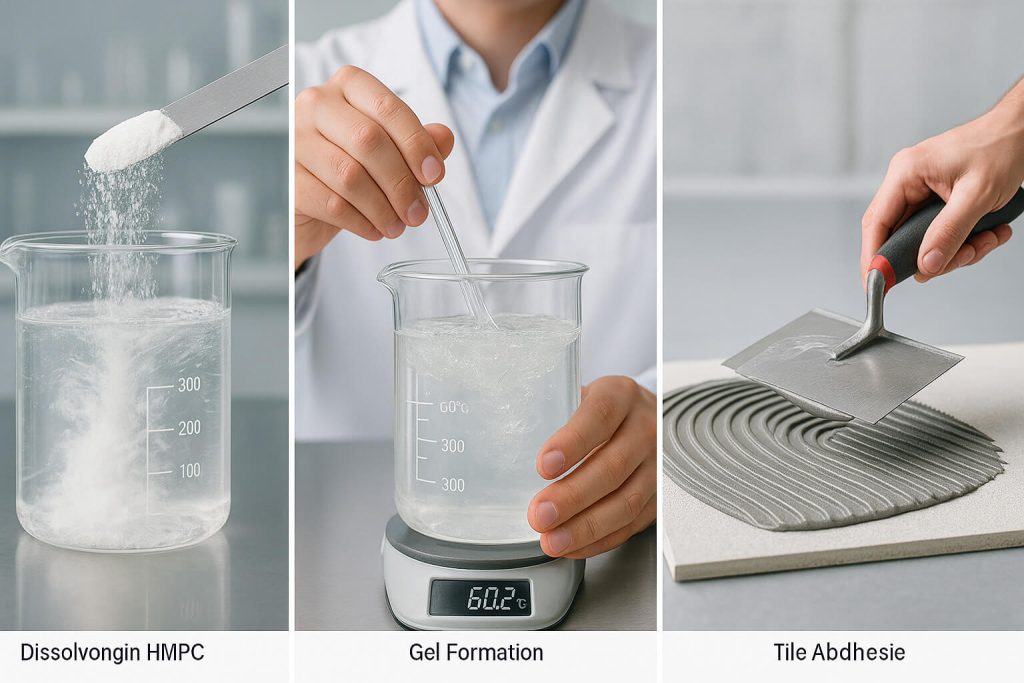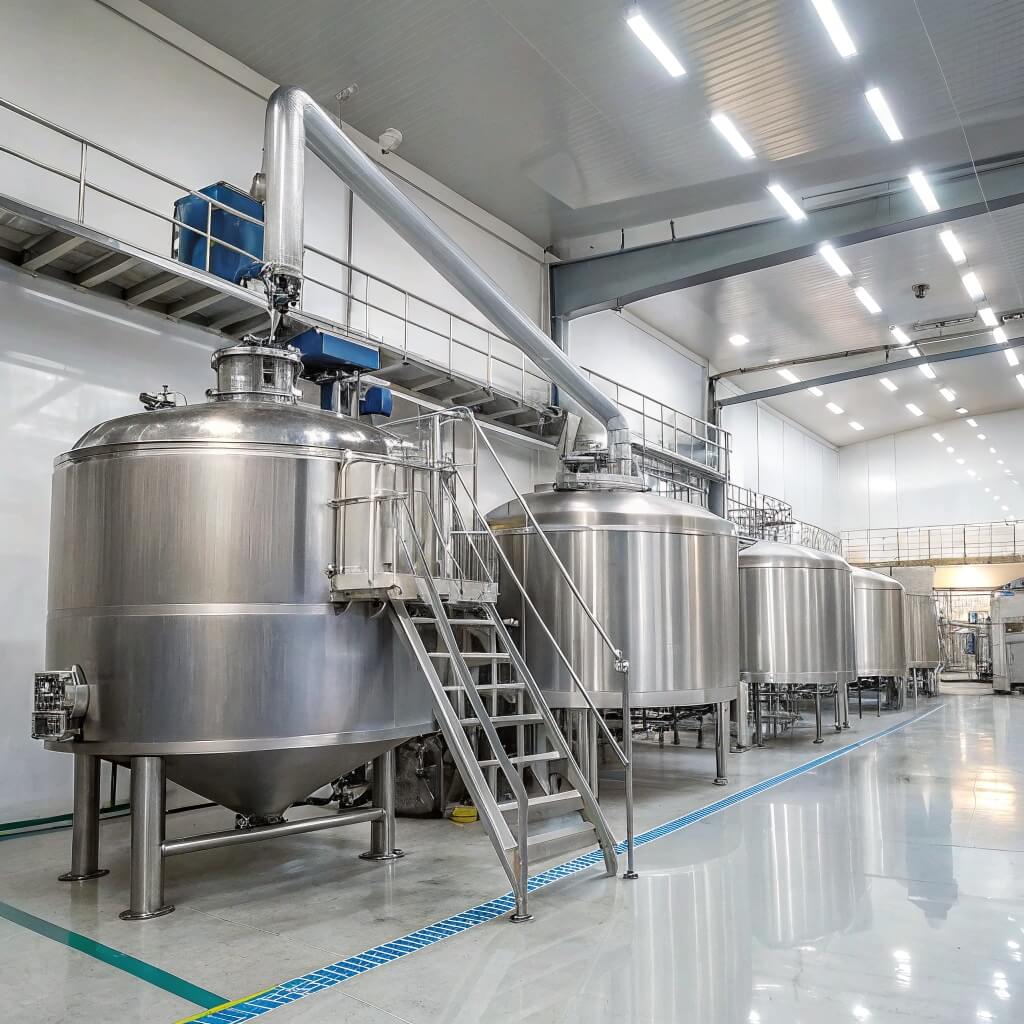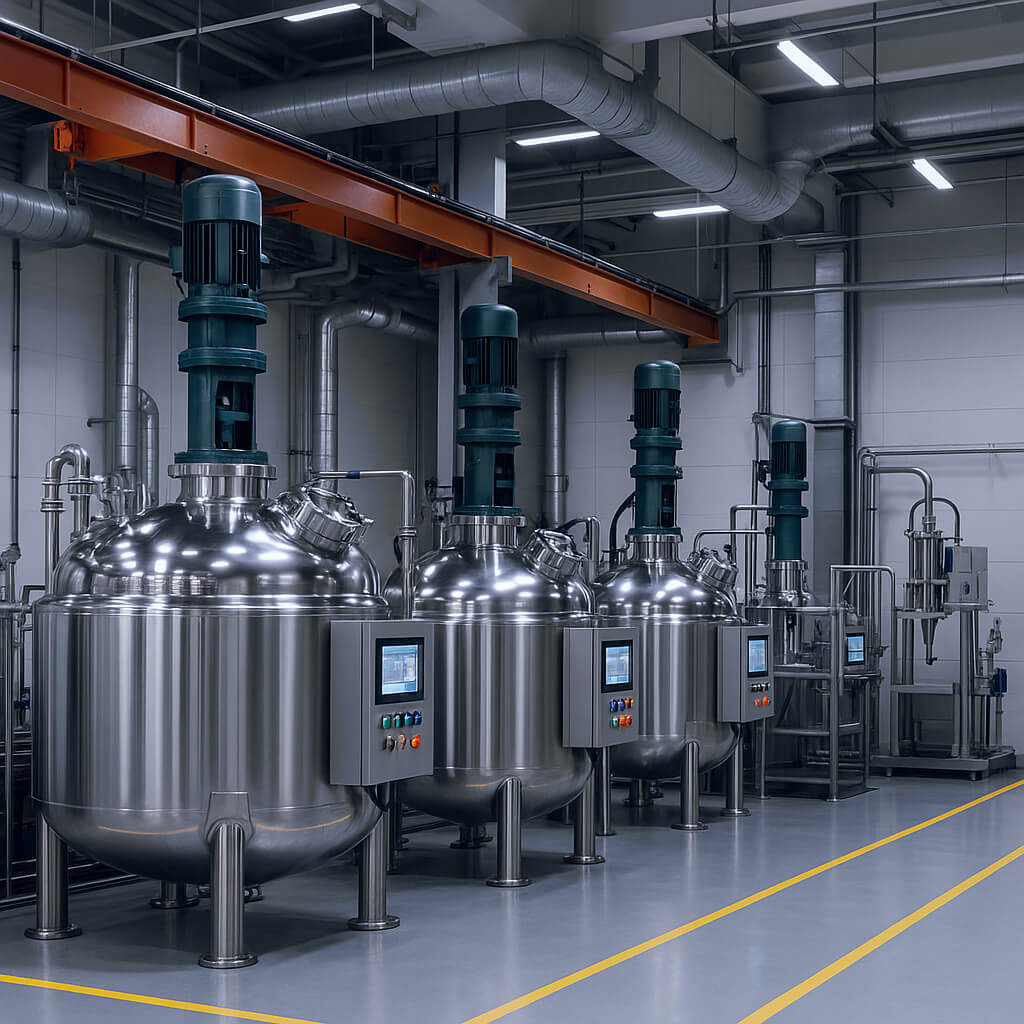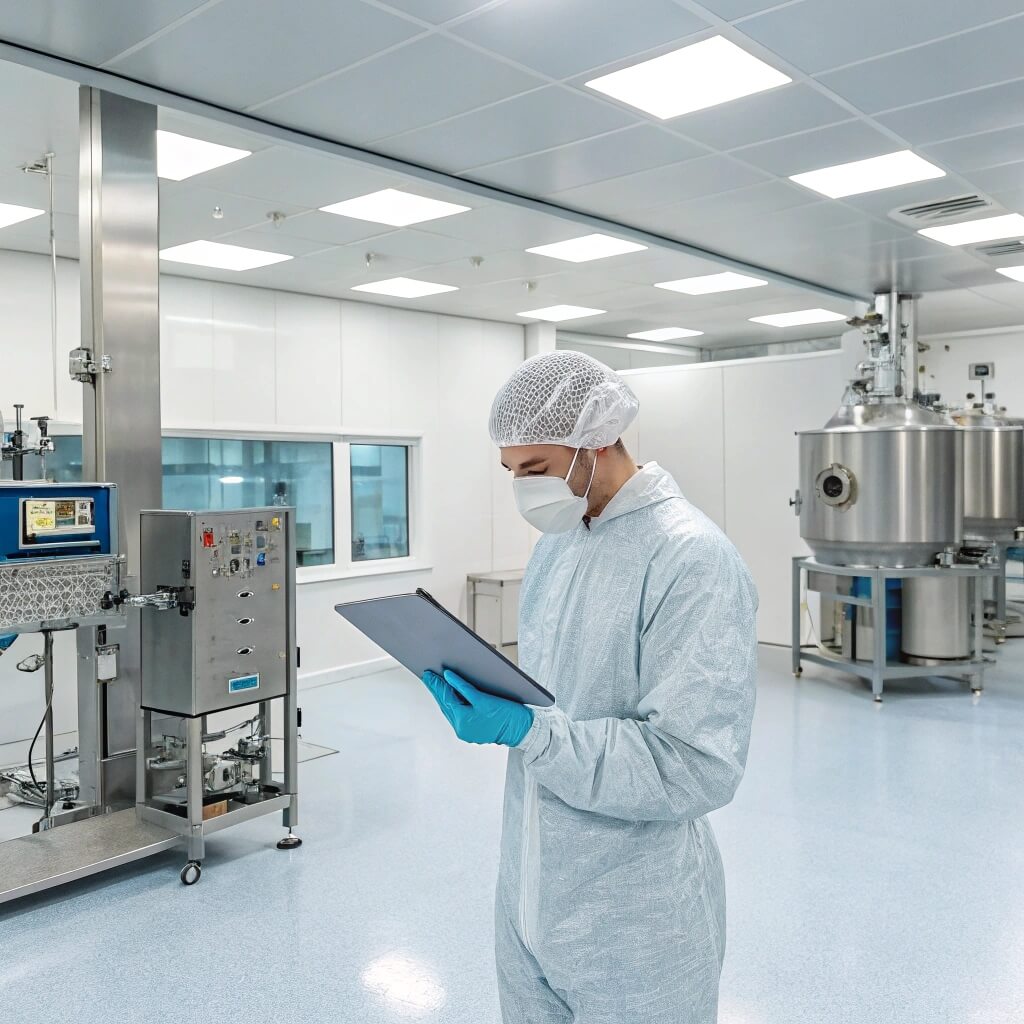La hidroxipropilmetilcelulosa (HPMC) es un polímero versátil que desempeña un papel fundamental en diversas industrias, desde la farmacéutica hasta la construcción y la producción alimentaria. Conocida por su capacidad para disolverse en agua y formar geles, sus propiedades únicas la convierten en un ingrediente valioso en numerosas formulaciones. Este artículo profundiza en las propiedades clave de la HPMC y explora cómo se aprovechan en diferentes aplicaciones industriales. Desde la mejora de la calidad del producto hasta la sostenibilidad ambiental, comprender los beneficios de la HPMC es esencial para los profesionales del sector.

1. ¿Qué es HPMC y cómo funciona en la industria?
La hidroxipropilmetilcelulosa (HPMC) es un polímero semisintético que se obtiene modificando la celulosa, un material vegetal natural. Mediante la introducción de grupos hidroxipropilo y metilo, la HPMC se vuelve hidrosoluble, formando sustancias gelatinosas ideales para diversas aplicaciones. Esta modificación química hace que la HPMC sea versátil y funcional, permitiéndole realizar una amplia gama de funciones, como espesar, emulsionar y aglutinar.
En entornos industriales, la capacidad del HPMC para disolverse tanto en agua fría como caliente lo convierte en una excelente opción para aplicaciones farmacéuticas, alimentarias y de construcción. Se utiliza en formulaciones de comprimidos como aglutinante, estabilizador y agente de liberación controlada en la industria farmacéutica. En la producción de alimentos, el HPMC actúa como espesante y emulsionante, garantizando que los productos mantengan la textura y consistencia deseadas. Además, en la construcción, sus propiedades de retención de agua y mejora de la adhesión lo convierten en un ingrediente esencial en morteros y adhesivos.
Al mejorar el rendimiento del producto y garantizar una calidad constante, el papel del HPMC en las aplicaciones industriales es fundamental. Comprender sus propiedades ayuda a los fabricantes a optimizar las formulaciones, mejorar la estabilidad del producto y satisfacer las demandas de diversas industrias.
| Industria | Aplicaciones | Papel de HPMC |
|---|---|---|
| Productos farmacéuticos | Aglutinantes, agentes de liberación controlada | Consistencia, liberación controlada del fármaco |
| Alimento | Emulsionantes, estabilizantes, espesantes | Textura, consistencia y vida útil. |
| Construcción | Morteros, adhesivos | Retención de agua, trabajabilidad, adherencia. |
2. ¿Cuáles son las propiedades físicas y químicas clave del HPMC?
Las propiedades clave del HPMC lo convierten en la opción preferida en diversas aplicaciones industriales. Estas propiedades incluyen: solubilidad en agua, control de viscosidad, formación de gel, estabilidad térmica, y biodegradabilidadCada propiedad juega un papel crucial a la hora de determinar la funcionalidad del polímero en diferentes industrias.
Solubilidad en agua Es quizás la propiedad más importante del HPMC. Permite que el polímero se disuelva tanto en agua fría como caliente, lo que lo hace ideal para productos que requieren una textura y estabilidad uniformes. Ya sea en productos farmacéuticos para formar matrices de comprimidos o en alimentos para estabilizar emulsiones, la solubilidad del HPMC garantiza resultados consistentes.
Control de viscosidad Es otra característica esencial. La HPMC puede modificar la viscosidad de las soluciones, lo cual es valioso tanto en formulaciones farmacéuticas como alimentarias. En la industria farmacéutica, ayuda a controlar la fluidez de los ingredientes activos en tabletas, mientras que en la alimentaria, proporciona la consistencia adecuada para salsas y aderezos.
Capacidad de formación de gel Hace que el HPMC sea especialmente útil en formulaciones de liberación controlada de fármacos. Al formar una matriz de gel, regula la velocidad de liberación de los principios activos, garantizando una liberación lenta y constante del fármaco.
Estabilidad térmica garantiza que el HPMC conserve sus propiedades funcionales cuando se expone a diferentes temperaturas, lo que es particularmente beneficioso en las industrias alimentaria y de la construcción.
Finalmente, Biodegradabilidad Esto convierte al HPMC en una opción ecológica para las industrias que buscan soluciones sostenibles. Ante la creciente preocupación por el medio ambiente, la capacidad del HPMC para descomponerse naturalmente es un factor clave.
| Propiedad | Funcionalidad | Solicitud |
|---|---|---|
| Solubilidad en agua | Se disuelve fácilmente en agua. | Productos farmacéuticos, alimentos, construcción |
| Control de viscosidad | Ajusta el espesor de las soluciones. | Productos farmacéuticos, alimentos |
| Capacidad de formación de gel | Forma geles para liberación controlada. | Productos farmacéuticos, construcción |
| Estabilidad térmica | Mantiene la estabilidad a diferentes temperaturas. | Productos farmacéuticos, alimentos |
| Biodegradabilidad | Se descompone naturalmente | Aplicaciones respetuosas con el medio ambiente |
3. ¿Cómo se utiliza HPMC en formulaciones farmacéuticas?
El papel de la HPMC en la industria farmacéutica es indispensable. Se utiliza ampliamente como... aglutinante En formulaciones de comprimidos, ayuda a unir los principios activos, garantizando así su integridad estructural. Sin HPMC, los comprimidos podrían desmoronarse o no distribuir el principio activo eficazmente. Al formar una masa uniforme y cohesiva, la HPMC garantiza que los principios activos se distribuyan uniformemente y que el comprimido permanezca intacto durante su manipulación e ingestión.
Otra función clave del HPMC en los productos farmacéuticos es su capacidad para controlar la liberación de fármacos. Formulaciones de liberación controlada Son vitales para garantizar que un fármaco se libere gradualmente, proporcionando efectos terapéuticos sostenidos. La HPMC actúa como la matriz que retiene el fármaco y regula su liberación, asegurando una administración constante y controlada a lo largo del día.
Además, la HPMC se utiliza en productos tópicos y transdérmicosEn estas aplicaciones, la HPMC forma geles que retienen los principios activos farmacéuticos en una matriz estable, lo que permite una absorción cutánea eficaz. Su capacidad de gelificación garantiza que el producto se mantenga intacto y que los principios activos se distribuyan de forma constante a lo largo del tiempo.
| Aplicación farmacéutica | Función | Beneficio |
|---|---|---|
| Aglutinante | Mantiene unidos los ingredientes activos | Garantiza la integridad del comprimido y la liberación uniforme del fármaco. |
| Liberación controlada | Regula la liberación de fármacos. | Efecto terapéutico constante, frecuencia de dosificación reducida. |
| Geles y productos tópicos | Forma matrices estables para productos tópicos. | Absorción cutánea eficaz, estabilidad. |
4. ¿Cuáles son los beneficios del HPMC en la producción de alimentos y bebidas?
En la industria alimentaria, el HPMC se utiliza principalmente como espesante, emulsionante, y estabilizadorSu versatilidad para modificar la textura y la consistencia de los productos alimenticios lo hace esencial en muchas formulaciones. Como espesanteEl HPMC ayuda a mejorar la textura en boca y la viscosidad de productos como salsas, sopas y aderezos. Al aumentar la viscosidad, el HPMC proporciona la textura adecuada, evitando que el producto se separe ni se vuelva demasiado líquido.
Emulsificación La HPMC es otra función vital en los alimentos. Se utiliza en productos como mayonesa, aderezos para ensaladas y helados, donde ayuda a mantener unidas las fases oleosa y acuosa. Sin la HPMC, estos productos experimentarían una separación de fases, lo que resultaría en texturas inconsistentes y una mala experiencia para el consumidor.
Estabilización Es igualmente importante en la producción de alimentos. En productos como alimentos sin gluten y formulaciones vegetales, el HPMC ayuda a mantener la consistencia y la textura, proporcionando un producto que imita las formulaciones tradicionales y ofrece las propiedades funcionales necesarias. El HPMC también prolonga la vida útil de los alimentos, evitando que se echen a perder prematuramente.
| Aplicación alimentaria | Función | Beneficio |
|---|---|---|
| Espesante | Aumenta la viscosidad en salsas y sopas. | Proporciona textura, evita la separación. |
| Emulsionante | Mantiene el aceite y el agua en suspensión. | Garantiza una textura uniforme y estabilidad. |
| Estabilizador | Mantiene la consistencia y extiende la vida útil. | Conserva la calidad del producto, mejora la textura. |
5. ¿Cómo se utiliza HPMC en la industria de la construcción?
En la industria de la construcción, el HPMC desempeña un papel importante como aditivo en morteros de mezcla seca, tiritas, y adhesivos para baldosasSu función principal es mejorar la trabajabilidad de estos materiales, lo que facilita su mezcla, aplicación y extensión. Los morteros y yesos a menudo pueden volverse demasiado espesos o difíciles de trabajar, pero el HPMC garantiza una mezcla suave y consistente, fácil de manipular.
Otra función importante de HPMC es retención de aguaEn morteros y revoques de mezcla seca, el HPMC ayuda a retener agua, evitando que la mezcla se seque demasiado rápido durante la aplicación. Esto permite un curado adecuado, asegurando que el material fragüe correctamente y forme uniones fuertes. Sin una adecuada retención de agua, el material podría secarse prematuramente, provocando grietas y una menor resistencia.
Mejora de la adherencia Otra ventaja del uso de HPMC en la construcción es que mejora la adherencia de los adhesivos para baldosas, garantizando que estas permanezcan firmemente en su lugar una vez aplicadas. Esto se traduce en instalaciones más duraderas y menos problemas de mantenimiento a largo plazo.
| Solicitud de construcción | Función | Beneficio |
|---|---|---|
| Morteros de mezcla seca | Mejora la trabajabilidad, evita la formación de grumos. | Fácil mezcla y aplicación. |
| Tiritas | Mejora la retención de agua. | Asegura un curado adecuado, previene grietas. |
| Adhesivos | Mejora la adhesión y la unión. | Unión fuerte y duradera |
6. ¿Cómo puede HPMC contribuir a las prácticas sostenibles y la fabricación ecológica?
Ante las crecientes preocupaciones ambientales, HPMC ofrece varias ventajas clave para las industrias que buscan alternativas más sostenibles. El HPMC es biodegradable, lo que significa que se descompone de forma natural sin dañar el medio ambiente. Esta biodegradabilidad convierte al HPMC en una opción atractiva para las empresas que buscan reducir su impacto ambiental.
En construcciónHPMC contribuye a materiales de construcción ecológicos Al reemplazar productos químicos sintéticos que podrían ser perjudiciales para el medio ambiente, el uso de HPMC ayuda a reducir la dependencia de ingredientes derivados del petróleo, promoviendo así la sostenibilidad en la construcción.
En el industria alimentaria, HPMC es un alternativa basada en plantas a ingredientes de origen animal como la gelatina, en línea con la creciente demanda de productos veganos y vegetarianos. Al sustituir estos ingredientes con HPMC, los fabricantes pueden producir opciones alimentarias más sostenibles y éticas que satisfacen a un público más amplio.
| Beneficio ambiental | Descripción | Solicitud |
|---|---|---|
| Biodegradabilidad | Se descompone naturalmente en el medio ambiente. | Construcción verde, producción de alimentos ecológica |
| Ecológico | Alternativa sostenible a los polímeros sintéticos | Materiales de construcción ecológicos, opciones alimentarias sostenibles |
7. ¿Cómo se puede personalizar el HPMC para diferentes usos industriales?
Una de las características destacadas de HPMC es su capacidad de personalización para diversas aplicaciones industriales. Los fabricantes pueden modificar viscosidad, tasa de disolución, y grado de sustitución para adaptar HPMC a necesidades específicas.
En el industria farmacéutica, ajustando el tasa de disolución Permite la creación de formulaciones de fármacos de liberación controlada. Esto permite a los fabricantes diseñar medicamentos que liberan sus principios activos lentamente, mejorando los resultados terapéuticos y reduciendo la necesidad de dosis frecuentes.
En el industria alimentaria, ajustando el viscosidad de HPMC garantiza que el producto tenga la textura deseada, ya sea para espesar una sopa o emulsionar un aderezo. Para construcción, personalizando el grado de sustitución Ayuda a mejorar la adhesión y trabajabilidad de morteros y adhesivos de mezcla seca.
| Aspecto de personalización | Función | Beneficio |
|---|---|---|
| Control de viscosidad | Ajusta el espesor de las soluciones. | Rendimiento personalizado para diversas industrias |
| Tasa de disolución | Controla la liberación del fármaco o la tasa de emulsificación. | Liberación prolongada, textura consistente. |
| Grado de sustitución | Influye en la solubilidad y la formación de gel. | Propiedades optimizadas para necesidades específicas |
8. ¿Cuáles son los desafíos comunes en el uso de HPMC?
Si bien la HPMC ofrece muchas ventajas, su uso presenta algunos desafíos. Uno de los más comunes es disolución inconsistenteAl trabajar con lotes grandes, puede resultar difícil garantizar que el HPMC se disuelva uniformemente, lo que puede generar una calidad inconsistente del producto.
Sensibilidad a la temperatura es otro problema. Si bien la HPMC es estable dentro de un cierto rango de temperatura, calor excesivo Puede degradar el polímero y reducir su eficacia. Es importante mantener las temperaturas de procesamiento correctas.
Finalmente, Problemas de costos y cadena de suministro Puede afectar la disponibilidad y el precio de la HPMC. Dependiendo de la fuente de celulosa y del grado de modificación, las fluctuaciones en el precio y la disponibilidad pueden afectar el costo total de producción.
| Desafío | Causa | Solución |
|---|---|---|
| Disolución inconsistente | Mezcla incorrecta, relación agua-polímero | Asegúrese de que las técnicas de disolución sean adecuadas y que se controle la calidad. |
| Sensibilidad a la temperatura | Degradación a altas temperaturas | Mantener condiciones óptimas de procesamiento |
| Problemas de la cadena de suministro | Fluctuaciones en los precios de las materias primas |
y disponibilidad | Encontrar proveedores confiables, optimizar la producción |
9. ¿Existen alternativas al HPMC en diversas aplicaciones?
Si bien el HPMC es muy eficaz, existen polímeros alternativos que cumplen funciones similares. Metilcelulosa (MC) Es una de estas alternativas, conocida por su capacidad para formar geles a temperaturas más altas. Sin embargo, la capacidad de MC para formar geles limita su versatilidad en comparación con la HPMC, lo que la convierte en la opción preferida en muchas aplicaciones.
Carboximetilcelulosa (CMC) Es otra alternativa, especialmente utilizada para la modificación de la viscosidad. El CMC es común en las industrias alimentaria y farmacéutica, pero carece de la capacidad de formación de gel que hace que el HPMC sea más adaptable.
A pesar de la existencia de estas alternativas, HPMC sigue siendo un polímero de referencia debido a su combinación de propiedades, que incluyen: solubilidad en agua, formación de gel, y control de viscosidad.
| Alternativa | Características principales | Solicitud |
|---|---|---|
| Metilcelulosa | Formación de gel a temperaturas más altas | Alimentos, productos farmacéuticos |
| Carboximetilcelulosa | Control de viscosidad | Alimentos, productos farmacéuticos |
| HPMC | Solubilidad en agua, formación de gel. | Farmacéutica, construcción, alimentación |
Conclusión
En conclusión, la hidroxipropilmetilcelulosa (HPMC) es un polímero versátil y esencial utilizado en numerosas industrias por sus propiedades únicas. solubilidad en agua, control de viscosidad, capacidad de formación de gel, y estabilidad térmica lo convierten en un ingrediente invaluable en productos farmacéuticos, alimentarios y de construcción. A medida que las industrias buscan adoptar prácticas más sostenibles, HPMC... biodegradabilidad y naturaleza ecológica Solo aumenta su valor. A pesar de desafíos como la sensibilidad a la temperatura y la variabilidad de la cadena de suministro, las ventajas de la HPMC superan con creces sus inconvenientes, lo que la convierte en la opción predilecta para fabricantes de todo el mundo.
Preguntas frecuentes
Q1:¿Qué es la hidroxipropilmetilcelulosa (HPMC)?
HPMC es un polímero derivado de la celulosa que se utiliza como aglutinante, emulsionante y estabilizador en diversas industrias, como la farmacéutica, la alimentaria y la de la construcción.
Q2¿Cómo funciona el HPMC en aplicaciones farmacéuticas?
HPMC actúa como aglutinante en tabletas y ayuda a controlar la liberación de ingredientes activos en formulaciones de liberación controlada, lo que garantiza una administración constante del medicamento.
T3¿Qué papel juega el HPMC en la industria alimentaria?
El HPMC se utiliza como espesante, emulsionante y estabilizador, mejorando la textura y la consistencia de los productos alimenticios y actuando como una alternativa vegana a ingredientes tradicionales como la gelatina.
T4¿Cómo beneficia HPMC a la industria de la construcción?
En la construcción, el HPMC mejora la trabajabilidad y la adhesión de los morteros y adhesivos, al mismo tiempo que ayuda a retener el agua para un mejor curado y durabilidad.
Q5¿Existen alternativas al HPMC?
Alternativas como la metilcelulosa y la carboximetilcelulosa ofrecen propiedades similares, pero HPMC sigue siendo la opción preferida debido a su funcionalidad y rendimiento versátiles en una amplia gama de industrias.




